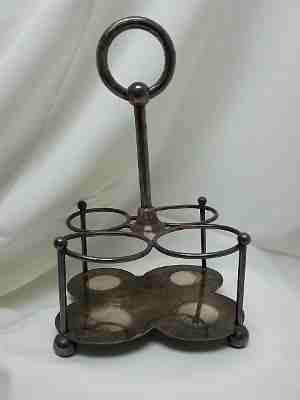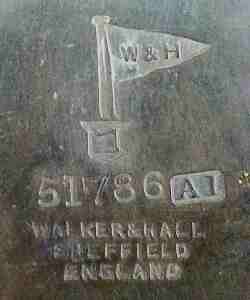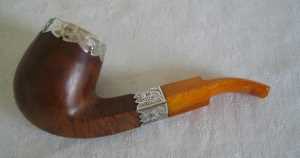 newsletter
# 143 April 2016
newsletter
# 143 April 2016www.ASCASonline.org SITE MAP
email: silverassociation@yahoo.it
YOUR GUIDE TO APRIL NEWSLETTER: articlesnew members members' windowmail to ASCAS replies to questions a page per month a silversmith per month a word per month a book on my shelf a crest per month contributors to this Newsletter search engine disclaimer and privacy policy A new article for ASCAS website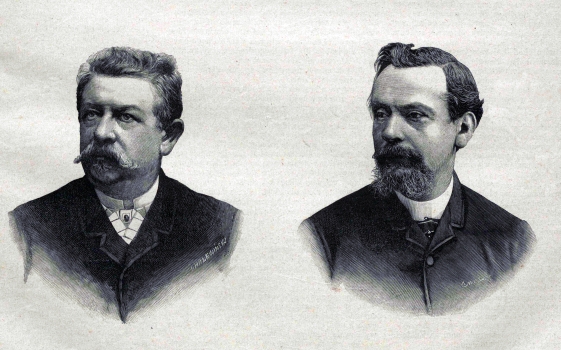
Joanna Paprocka-Gajek and David N. Nikogosyan present:
|
top page - page map |
Members' Window # 111

David N. Nikogosyan and Joanna Paprocka-Gajek present:
|
Mail to ASCAS: e-mail
silverassociation@yahoo.it E. Endre writes:
... This sugar bowl is marked Martin. I'd wish to know more about this French maker
Thank you
E. Endre
The maker is Marie Martin, veuve (widow) née (born) Rache, Rue Halévy, Paris, from 1886
Giorgio Busetto
Courtney Klugel writes:
... I'd wish to know what is this item and its use.
Courtney Klugel
Your item is a silverplate tea urn, see further details in my website at http://www.silvercollection.it/dictionaryteaurn.html
Giorgio Busetto
Luigi Masciullo writes:
... I need your help to identify the maker of this silver chalice.
Any help or suggestion will be greatly appreciated
Luigi Masciullo
Deana Parr writes:
... Today I visited your site to see if I could determine the marks on a piece donated to us.
I have included pictures of the marks and of the item itself, I believe it to be condiment
container, and by the markings I think it was an item manufactured for the Grand Trunk
Pacific Railway here in Western Canada. From what I can find GTP was started in the
early 1900s and was sold in the early 1920s.
So, after running on for so long, I was wondering whether or not you could confirm some
of this with the marks ( I also see that the mark under the flag could be the Hebrew symbol "Vet").
I use your site frequently and find it to be an enormous help.
Thanks so much for all you do to lend a helping hand,
Deana Parr
Thrift Store Coordinator
Salvation Army Nanaimo Ministries
Information about Walker & Hall date letters are available in my site at http://www.silvercollection.it/ENGLAWALKER&HALLDATE.html
The image of the mark isn't well readable. Anyway if the letter is "vet" the exact date is 1909.
Giorgio Busetto
"A PAGE per MONTH"
In this column we presents a page obtained from makers'
brochures, books, auction catalogs, advertising or whatever
other printed paper, related to silver, that may be of interest
for ASCAS members.
The images will be published at a "low resolution" level and for
private and personal use only.
This column is published under the kind permission of Giorgio
Busetto's website
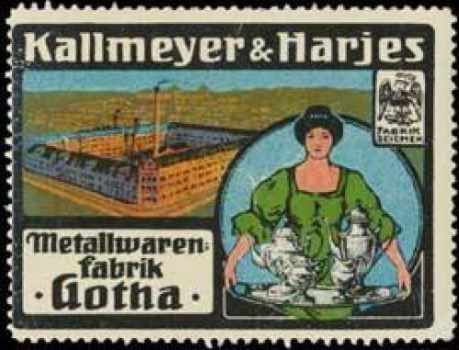 |
This month ASCAS presents an ancient advertising label:KALLMEYER & HARJESGothaer Metallwarenfabrik "Kallmeyer & Harjes", Gotha (Germany) was founded in 1887 by Philipp Harjes (1860-1933) and Hermann Kallmeyer.
After Kallmeyer's death (1897) Philipp Harjes became unique owner of the firm in 1899.
|
"A WORD per MONTH"
In this column we present an abstract from a page of the "What is? Silver Dictionary"courtesy of

|
THE ILLUSTRATED DIRECTORY OF UK FAMILY CRESTSThe crest is one component of a coat-of-arms, which can be used as a simplified symbol on engraved silverware.Objects frequently borne as crests include animals, mythological creatures, human figures, hands or arms holding weapons, birds. In this page is illustrated a selection of crests belonging to English, Irish and Scottish families ordered according to the main subject that characterizes this part of the coat of arms. MORE |
"A SILVERSMITH per MONTH"
In this column
we present marks, information and history of silversmiths and
silver manufacturers.
This column is published under the kind permission of Giorgio
Busetto's website

CHARLES MAAS & COCharles Leopold Maas was active in London from 1883 at 13 Jewin Crescent, EC as manufacturer and importer of smokers' pipes of various types, including "recherché" and
"meerschaum".
|
"A CREST per MONTH"
In this column we usually
present images and descriptions of Crests and Mottoes of British,
Irish and Scottish families as engraved on silver items.
This month we make an exception and publish a German 'Coat of Arms' supplied by Maurice Meslans
Closing our APRIL 2016 edition of ASCAS Newsletter I hope
you have appreciated its content.
Your comments, suggestions and advice will be of great help.
My thanks to E. Endre, Courtney Klugel, Luigi Masciullo, Maurice Meslans, David N. Nikogosyan, Paprocka-Gajek Joanna and Deana Parr for their precious contributions.
Giorgio Busetto
Secretary
DISCLAIMER AND PRIVACY POLICYASCAS is a community of people having a common
interest in antique silver.
|






